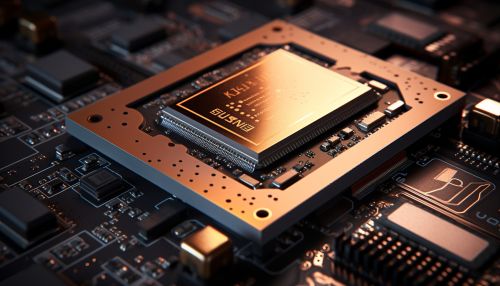Computer Memory
Introduction
Computer memory is a critical component of any computing system, serving as the workspace for the computer's processor. It is where the computer holds the data it is currently working on or the instructions it is currently executing. The term "computer memory" is often synonymous with 'RAM', but it also refers to all the storage devices used in a computer, such as the hard drive, solid state drive (SSD), and optical drives.
Types of Computer Memory
Computer memory can be broadly classified into two types: primary memory and secondary memory.
Primary Memory
Primary memory, also known as main memory, is the area in a computer where the operating system, application programs, and data in current use are kept so that they can be quickly reached by the computer's processor. It is volatile in nature, which means it requires power to maintain the stored information; data is lost when the power is switched off. Examples of primary memory include RAM and 'cache memory'.


Random Access Memory (RAM)
RAM is the most common type of memory found in computers and other devices, such as printers. It is considered "random access" because any storage location (also known as a memory address) can be accessed directly. RAM is much faster to read from and write to than other kinds of storage in a computer, such as the hard disk or optical disc.
Cache Memory
Cache memory is a type of computer memory that temporarily stores frequently used program instructions to increase the speed of a system. It is the fastest type of memory in a computer, and it is typically integrated directly with the CPU (central processing unit) or placed on a separate chip that has a separate bus interconnect with the CPU.
Secondary Memory
Secondary memory, also known as external memory or storage, is used to store data and programs permanently, even when the computer is turned off. Examples of secondary memory include hard disk drives, SSDs, and optical drives.
Hard Disk Drive (HDD)
A 'hard disk drive' (HDD) is a data storage device used for storing and retrieving digital information using rapidly rotating disks (platters) coated with magnetic material. HDDs are non-volatile, meaning they retain stored data even when powered off.
Solid State Drive (SSD)
A 'solid state drive' (SSD) is a non-volatile storage device that stores persistent data on solid-state flash memory. SSDs have no moving mechanical components, which makes them less susceptible to physical shock, quieter, and faster than hard drives.
Optical Drive
Optical drives are storage devices that use light to read and write data. Examples include CD (compact disc), DVD (digital versatile disc), and Blu-ray disc drives.
Memory Hierarchy
In a computer system, the 'memory hierarchy' refers to the arrangement of storage devices in order of speed and capacity, from fastest and smallest to slowest and largest. It includes the CPU registers, cache memory, main memory, and secondary memory. The memory hierarchy ensures that the CPU has the data it needs to process instructions efficiently.
Memory Management
'Memory management' is the process of controlling and coordinating computer memory, assigning portions called blocks to various running programs to optimize overall system performance. Memory management resides at the core of the operating system, as its functionality can impact system stability.
Conclusion
Computer memory plays a pivotal role in the operation of a computer system. It provides the processor with a workspace for executing instructions and manipulating data, enabling the computer to perform tasks efficiently. Understanding the different types of memory and how they function can help in optimizing computer performance and in making informed decisions when purchasing or upgrading computer hardware.
